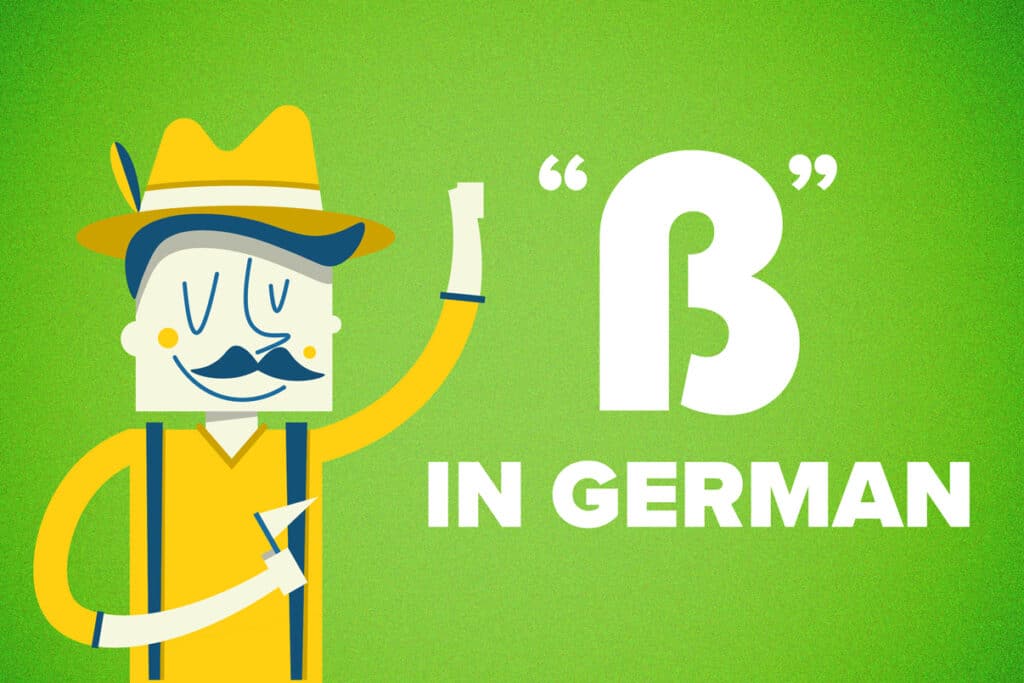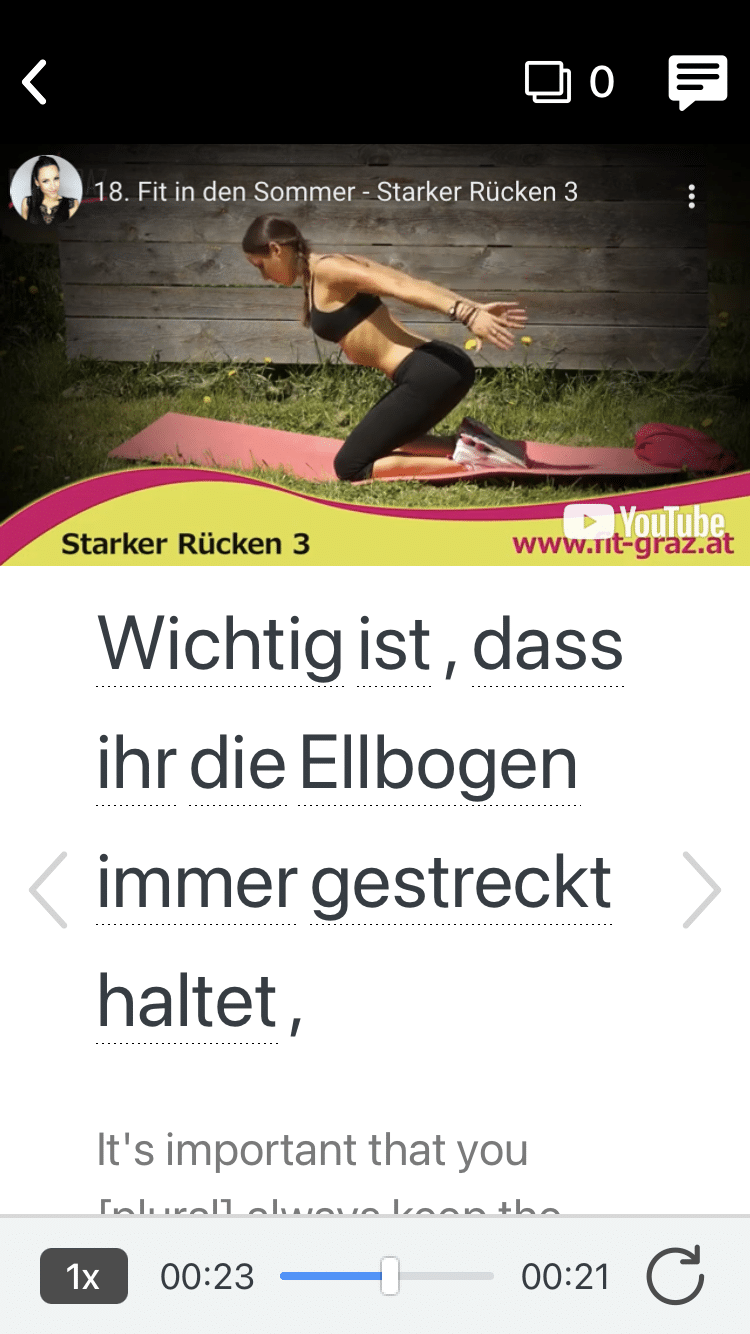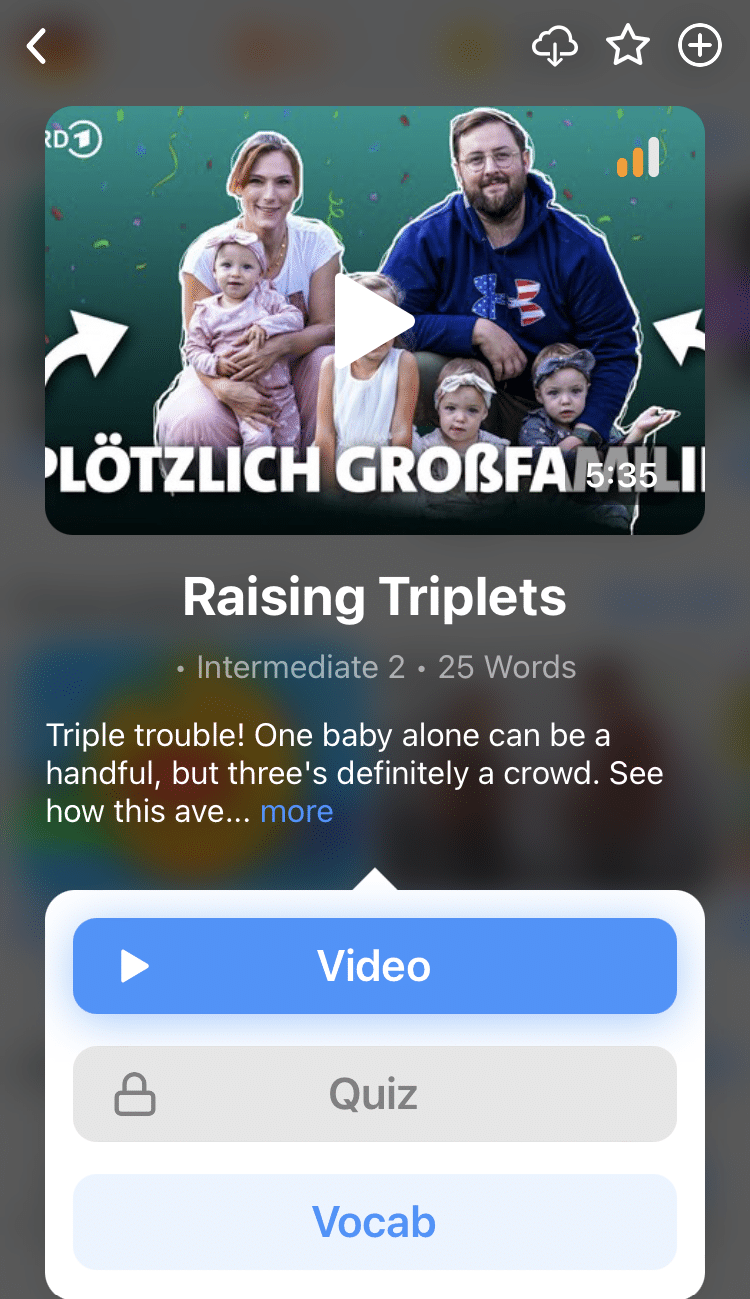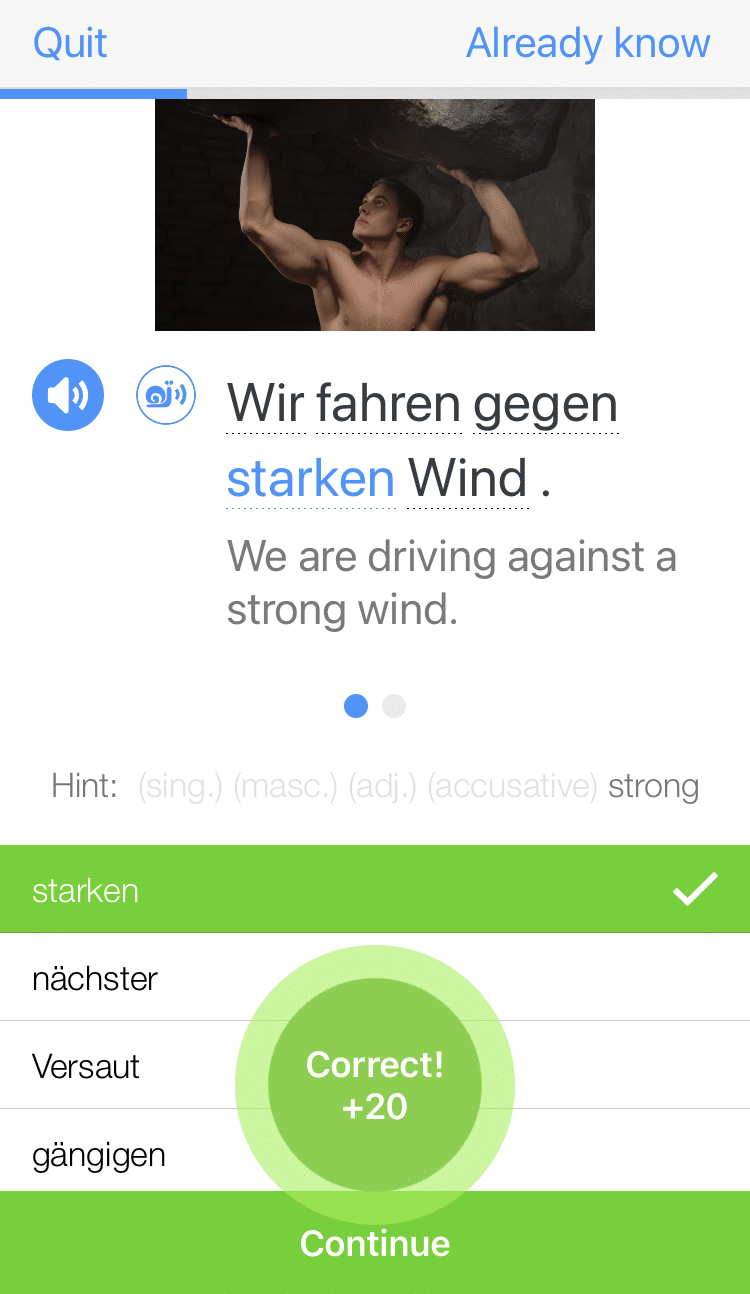
The German Double S: When and How to Use the Eszett (ß)
If you’re learning German, you may have seen this fancy letter: ß.
This is called the eszett, and it’s primarily used to represent the /s/ sound, similar to the way the double “s” is used in English.
This special character can often confuse German learners, but we’re here to clear up the confusion.
In this article, you’ll learn when and how to use ß so you can incorporate it into your daily German speaking and writing.
By understanding the eszett and how it shows up in different German words, you can build your confidence and sound more like a native speaker.
Contents
- Why Does ß Mean “Double S” in German?
- History and Current Usage of the German Eszett (ß)
- When and How to Use the Eszett (ß)
- How to Type the Eszett (ß)
- And One More Thing...
Download: This blog post is available as a convenient and portable PDF that you can take anywhere. Click here to get a copy. (Download)
Why Does ß Mean “Double S” in German?
In German, the letter ß is known as the eszett or scharfes (sharp) S. It’s a special character, similar to the German umlaut you’re probably used to seeing by now. But unlike those two dots above “a,” “o” or “u,” the eszett is written as a capital B-shaped character with a tail: ß.
Technically, the eszett is shorthand for “ss” just as the umlaut is shorthand for “ae,” “oe” or “ue.” However, it’s not always grammatically correct to replace the double “s” with an eszett.
We’ll get further into the details of when you can and can’t use the eszett to replace a double “s” structure later, but for now, just know that the eszett sounds just like how you’d pronounce a single or double “s” in English, as in the words “sail,” “silly” or “lesson.”
History and Current Usage of the German Eszett (ß)
The eszett character was actually taken from the Gothic alphabet. Used in Germany, Luxembourg and Austria, the eszett has gone through many reforms throughout the years. In some countries (like Switzerland) it’s no longer used, while in others the use of the eszett is somewhat controversial. It’s a bit like the Oxford comma in that way.
When we say controversial, we mean that the eszett has even caused issues for the German government. German passports are required by law to use all capital letters. Unfortunately, not everyone agreed on—or knew—how to write the capital eszett. That’s why passports will use the convention of a double “s” instead of bothering with the eszett.
In fact, subbing out the eszett for a double “s” is acceptable in informal German writing as well. So in reality, it’s not the end of the world if you use a double “s” instead of an eszett. But as a German language learner, you should know how and when to use the ß character.
When and How to Use the Eszett (ß)
On to the tricky part. We know that eszetts replace the double “s” structure, but in what instances? And what about the single “s”?
“S” Sounds in German
If you hear a spoken word in German, how do you know if it should use a single “s”, double “s” or eszett?
On its own, a German “s” can make two sounds: hard and soft. A hard “s” is like the noise a snake makes (sss!) or like the “s” in “same.” A soft “s” sounds more like the letter “z”, like in the English word “as.”
A single “s” in German can be hard or soft. For example:
sanft (soft) is pronounced “z-an-f-t” (Soft)
die Reise (the trip) is pronounced “r-aye-z-uh” (Soft)
das Haus (the house) is pronounced “h-au-s” (Hard)
A double “s,” on the other hand, will always make a hard “s” sound. For example:
die Tasse (the cup) is pronounced “t-ah-s-uh”
die Klasse (the class) is pronounced “k-l-ah-s-uh”
hassen (to hate) is pronounced “ha-s-en”
das Messer (the knife) is pronounced “m-es-er”
die Esse (the chimney) is pronounced “e-s-uh”
The eszett also always makes a hard “s” sound, whether it comes in the middle of the word or at the end:
groß (large) is pronounced “g-r-o-s”
der Ausmaß (extent) is pronounced “ow-s-mar-s”
heiß (hot) is pronounced “h-ei-s”
der Abreißpunkt (the cut-off point) is pronounced “ab-rye-s-poo-nkt”
mäßig (moderate) is pronounced “may-s-ig”
You can practice pronouncing German words and listening to native speakers on FluentU.
FluentU takes authentic videos—like music videos, movie trailers, news and inspiring talks—and turns them into personalized language learning lessons.
You can try FluentU for free for 2 weeks. Check out the website or download the iOS app or Android app.
P.S. Click here to take advantage of our current sale! (Expires at the end of this month.)
When to Use “ss” and Eszett (ß)
If eszetts make the same sound as the double “s” structure, how do you know when to use one or the other?
First, it’s important to know that the eszett never appears at the beginning of a word. You’ll only find it near the middle or at the end.
Another hard-and-fast rule about the eszett: it never comes after a short vowel sound. For example, the word anschließen (to connect) is grammatically correct when written with an eszett, because the “ie” pairing in anschließen sounds like “ee.” However, the noun der Anschluss (connection) isn’t written with an eszett. This is because the letter “u” in der Anschluss sounds like “uh”—a short vowel sound.
You’ll frequently see the eszett after diphthongs. A diphthong is a pair of vowels that creates a completely new sound. The pairing “ei” is an example. Alone, the “e” would sound like “eh,” and the “i” would be pronounced “ih.” Together, however, “ei” is pronounced “aye,” as in “Aye, aye, captain!” The word beißen (to bite) is a good example of a diphthong followed by the eszett.
A lot of being able to differentiate between “ss” and ß will come from practice and exposure. The more you see German words written out, the more you’ll begin to memorize which words use which characters.
How to Type the Eszett (ß)
Beyond speaking the eszett aloud and seeing it in text, you’ll probably want to learn to type it as well.
The absolute easiest way in almost any program is to look for the “Insert Symbol” function and search for the ß manually. However, there are ways you can type the eszett if you don’t have the “Insert Symbol” function available.
If you own a PC, simply hold down the alt key and type 0223. For Macs, on the other hand, hold down Option-S.
If neither of these options work, remember that you can simply type the letters “ss” instead of worrying about the special character. This should really only be used in isolated cases where you have no other option, but your meaning will be understood either way.
Now that you know when and how to use the German double “s” and the eszett, you can impress native speakers with your newfound knowledge.
You’ll be able to explain the history of this special character and use it correctly in different contexts.
Congratulations—you’re one step closer to mastering the German language!
Download: This blog post is available as a convenient and portable PDF that you can take anywhere. Click here to get a copy. (Download)
And One More Thing...
Want to know the key to learning German effectively?
It's using the right content and tools, like FluentU has to offer! Browse hundreds of videos, take endless quizzes and master the German language faster than you've ever imagine!
Watching a fun video, but having trouble understanding it? FluentU brings native videos within reach with interactive subtitles.
You can tap on any word to look it up instantly. Every definition has examples that have been written to help you understand how the word is used. If you see an interesting word you don't know, you can add it to a vocabulary list.
And FluentU isn't just for watching videos. It's a complete platform for learning. It's designed to effectively teach you all the vocabulary from any video. Swipe left or right to see more examples of the word you're on.
The best part is that FluentU keeps track of the vocabulary that you're learning, and gives you extra practice with difficult words. It'll even remind you when it’s time to review what you’ve learned.
Start using the FluentU website on your computer or tablet or, better yet, download the FluentU app from the iTunes or Google Play store. Click here to take advantage of our current sale! (Expires at the end of this month.)







